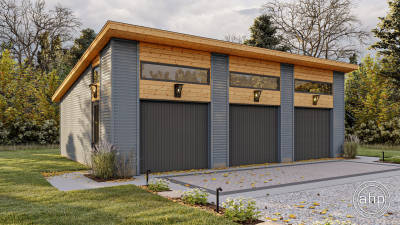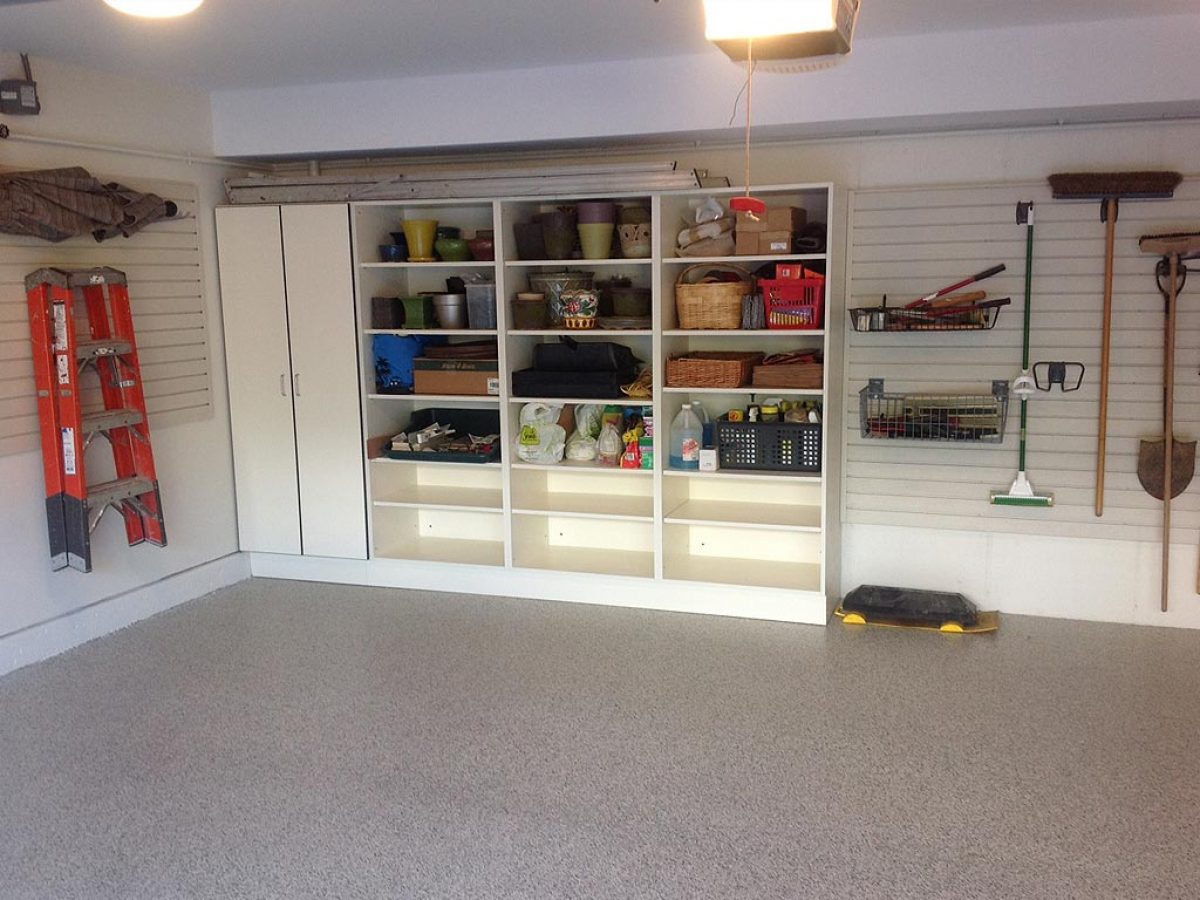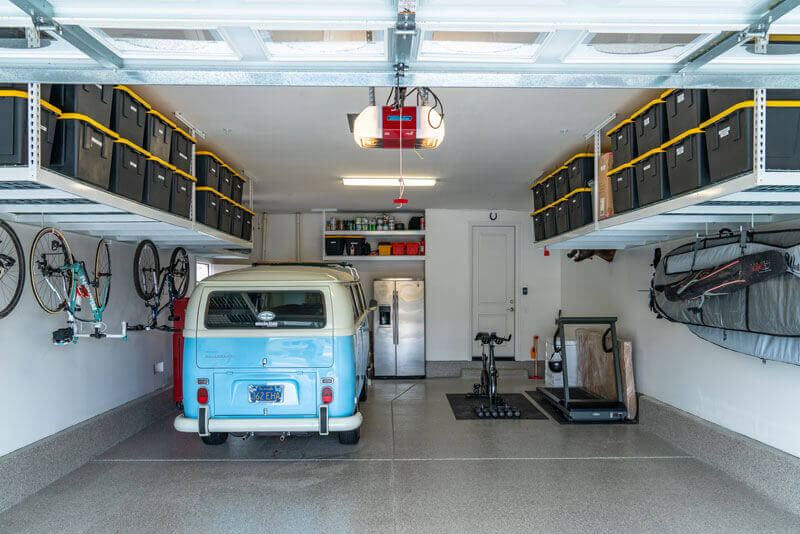
Garage shelving can make your garage more spacious. Garage shelving comes in many styles, including wall-mounted or freestanding. However, you must ensure that your unit is able to hold all items. Choosing a shelving unit with the right material is also important. Certain materials are more durable than others and can withstand spills and stains better than others.
Garage shelving can also be made out of MDF, metal or particle board. Particle board is lightweight, but is more likely to stain than metal. If you plan to store heavy items, such as tools and equipment, you may want to opt for a heavier-duty shelving system.
Wall-mounted shelves make it easy to maximize your storage area. Mounted shelves attach to your garage walls via brackets. These brackets are made of metal and are anchored to the studs on your garage wall. You should place the shelves at least 16inches from the floor and at least 20inches apart. Ceiling-mounted shelving systems are also available that project downward. Unlike a freestanding unit, these aren't heavy, so they are easier to move around.

Freestanding units may be either metal or wood. They can be mounted to a wall or ceiling. While they have a greater flexibility than other types of shelving units, they require more floor space. You'll need a drill, and tools to install them.
Chrome mesh or steel wire are common materials for adjustable rail shelves. Vertical metal tracks can be installed on the wall. The brackets are inserted into slots. You can add or remove items from the shelves by making them adjustable. They are typically designed to store heavy objects, but they can be easily moved to create more storage space.
Particle board works well for shelving, but it can stain when a can of engine fluid leaks. Metal shelving is nonporous and doesn't absorb chemicals, making it ideal for storing paint and other chemical-based products.
MDF or particle board are a good option if you don’t need to store heavy items but don’t mind sacrificing structural integrity. Both are strong and simple to assemble. Powder coatings on some units help prevent scratches and dents.

MDF and Particle board are typically lighter than metal, however their weight capacity isn’t as high. Plastic shelving is easier to move and cheaper than metal. You should also be aware that plastic shelving is more easy to clean than MDF so it might not work well in a messy, wet or dusty garage.
You can also purchase an adjustable rail shelf. This kind of shelving can be adjusted to your liking, but you will need to locate studs in your wall to attach it to. Some of these shelves don't fit well on concrete walls.
Garage shelving costs will vary depending upon the materials used. Your energy bill can also be affected by the material you choose. Be sure to use a temperature-controlled space if you plan to store food or hazardous materials. To prevent spills and stains, cover the shelves.
FAQ
What are the top expenses associated with remodeling a Kitchen?
Planning a kitchen renovation can be costly. These include demolition, design fees, permits, materials, contractors, etc. They seem quite small when we consider each of these costs separately. They quickly grow when added together.
Demolition is usually the most expensive. This includes removing any cabinets, appliances, countertops or flooring. Then you have to remove the drywall and insulation. Then, it is time to replace the items with newer ones.
The next step is to hire an architect to design the space. Next, you must pay for permits to ensure the project meets building codes. The final step is to find someone to carry out the actual construction.
Once the job has been finished, you need to pay the contractor. Depending on the size of the job, you could spend between $20,000 to $50,000. It is crucial to get estimates from several contractors before you hire one.
If you plan, you can often avoid some of these costs. You might be able negotiate better materials prices or skip some work. You can save money and time if you are clear about what you need to do.
For example, many people try to install their cabinets. They believe this will save money, as they won’t have to hire professional installers. Problem is, they often spend more time trying to place the cabinets themselves. A professional will usually finish a job in half as much time as you would.
You can save money by buying unfinished materials. Before purchasing pre-finished materials like cabinets, you must wait until all the pieces are assembled. You can immediately use unfinished materials if you purchase them. If things don't work out as planned, you can always modify your mind later.
Sometimes it is not worth the hassle. Plan is the best way to save on home improvements.
What would it cost for a home to be gutted versus what it would cost to build one?
A home's contents are removed, such as walls, floors, ceilings and plumbing. It is often done when you are moving to a new location and wish to make some improvements before you move in. It is often very costly to gut a home because of all the work involved. Your job may require you to spend anywhere from $10,000 to $20,000 to gut your home.
Building a home means that a builder constructs a house piece by piece, then adds windows, doors, cabinets and countertops to it. This is often done after purchasing lots of land. Building a home is typically cheaper than renovating, and usually costs between $15,000-30,000.
It really depends on your plans for the space. If you are looking to renovate a home, it will likely cost you more as you will be starting from scratch. But if your goal is to build a house, you won't need to disassemble everything and redo everything. You can build it as you wish, instead of waiting to have someone else tear it apart.
Is $30000 sufficient for a kitchen remodeling project?
A kitchen remodel costs anywhere from $15000 up to $35000 depending on what you are looking for. You can expect to spend more than $20,000. If you are looking for a complete overhaul of your kitchen, it will cost more. If you are looking to upgrade appliances, paint or replace countertops, it is possible to do this for less than $3000.
Full-scale renovations typically cost between $12,000 and $25,000. However, there are ways to save without sacrificing quality. You can replace an existing sink with a new one for around $1000. A second option is to buy used appliances at half their cost.
Kitchen renovations can take longer than other types projects so plan ahead. It's not ideal to begin working in your kitchen, only to find out halfway through that there isn't enough time to finish the job.
Start early. Begin looking at the options and getting quotes from different contractors. Next, narrow your options based on price and availability.
After you have found potential contractors, get estimates and compare prices. Not always the best choice is the lowest-priced bid. It's important to find someone with similar work experience who will provide a detailed estimate.
Remember to include all the extras when calculating the final cost. These extras could include labor and material costs, permits, or other fees. Be realistic about how much you can afford and stick with your budget.
If you're unhappy with any of the bids, be honest. Tell the contractor why you don't like the initial quote and offer another chance. Do not let your pride stop you from saving money.
Do you think it is cheaper to remodel a kitchen or a bathroom?
Remodeling a bathroom or kitchen is an expensive proposition. It may make more sense to spend money on home improvements, considering how much you pay in energy bills each month.
Small upgrades can help you save thousands of dollars per year. Simple improvements such as insulation of walls and ceilings can lower heating and cooling costs up to 30 percent. Even a modest addition can improve comfort and increase resale value.
The most important thing to keep in mind when planning for renovations is to choose products that are durable and easy to maintain. Material like porcelain tile, stainless-steel appliances, and solid wood flooring are more durable and can be repaired less often than vinyl or laminate countertops.
You might also find that replacing old fixtures by newer models can reduce utility expenses. Low-flow showerheads or faucets can help reduce water usage by up 50 percent. By replacing inefficient lighting with compact fluorescent lamps, you can reduce electricity consumption up to 75%.
What is the cost of completely renovating a kitchen?
You may be curious about the cost of a home renovation.
The average kitchen remodel costs between $10,000 and $15,000. You can save money and still improve your space's appearance.
One way to reduce costs is to plan ahead of time. This includes choosing a style and color scheme that suits your lifestyle and finances.
Another way to cut costs is to make sure that you hire an experienced contractor. A professional tradesman knows exactly how to handle each step of the construction process, which means he or she won't waste time trying to figure out how to complete a task.
It's a good idea to evaluate whether your existing appliances should be replaced or preserved. A kitchen remodel can add thousands to the cost by replacing appliances.
Another option is to consider purchasing used appliances. You will save money by purchasing used appliances.
You can also save money by shopping around when buying materials and fixtures. Special events like Cyber Monday and Black Friday often offer discounts at many stores.
What should I do with my current cabinets?
It depends on whether your goal is to sell or rent out your house. If you're planning to sell, you'll probably want to remove and refinish the cabinets. This gives buyers a feeling of newness and allows them to visualize their kitchens when they move in.
But if your goal is to rent your house you will need to remove the cabinets. Many renters complain about the dishes that are dirty and the greasy fingerprints left by tenants.
You might also think about painting your cabinets to make them appear newer. Make sure to use high-quality primers and paints. Low-quality paints can peel off over time.
Statistics
- 57%Low-end average cost: $26,214Additional home value: $18,927Return on investment: (rocketmortgage.com)
- bathroom5%Siding3 – 5%Windows3 – 4%Patio or backyard2 – (rocketmortgage.com)
- 55%Universal average cost: $38,813Additional home value: $22,475Return on investment: 58%Mid-range average cost: $24,424Additional home value: $14,671Return on investment: (rocketmortgage.com)
- Attic or basement 10 – 15% (rocketmortgage.com)
- Windows 3 – 4% Patio or backyard 2 – 5% (rocketmortgage.com)
External Links
How To
How to Install Porch Flooring
It is very simple to install porch flooring, but it will require planning and preparation. The easiest way to install porch flooring is by laying a concrete slab before installing the porch flooring. But, if you don’t have the concrete slab available, you could lay a plywood board deck. This allows you install the porch flooring easily without needing to make a large investment in a concrete slab.
Secure the plywood (or subfloor) before you start installing porch flooring. To do this, you must measure the width of the porch and cut two strips of wood equal to the porch's width. These strips should be placed along both sides of the porch. Then nail them in place and attach to the walls.
After securing the subfloor, you must prepare the area where you plan to put the porch flooring. This involves typically cutting the top layer from the floorboards to fit the area. Finish the porch flooring by applying a finish. A common finish is a polyurethane. A stain can be applied to porch flooring. It is much easier to stain than to apply a clear coat. You only have to sand the stained areas once you have applied the final coat.
Now you are ready to put in the porch flooring. Measure and mark the location for the porch flooring. Next, cut the porch flooring according to your measurements. Finally, put the porch flooring in its place and nail it.
If you want to increase the stability of your porch flooring's floor, you can install porch stairs. Porch stairs are often made from hardwood. Some people prefer to have their porch stairs installed before their porch flooring.
Once your porch flooring is installed, it is time for the final touches. You first have to take out the old porch flooring and put in a new one. You will then need to clean up any debris. Take care of dust and dirt in your home.